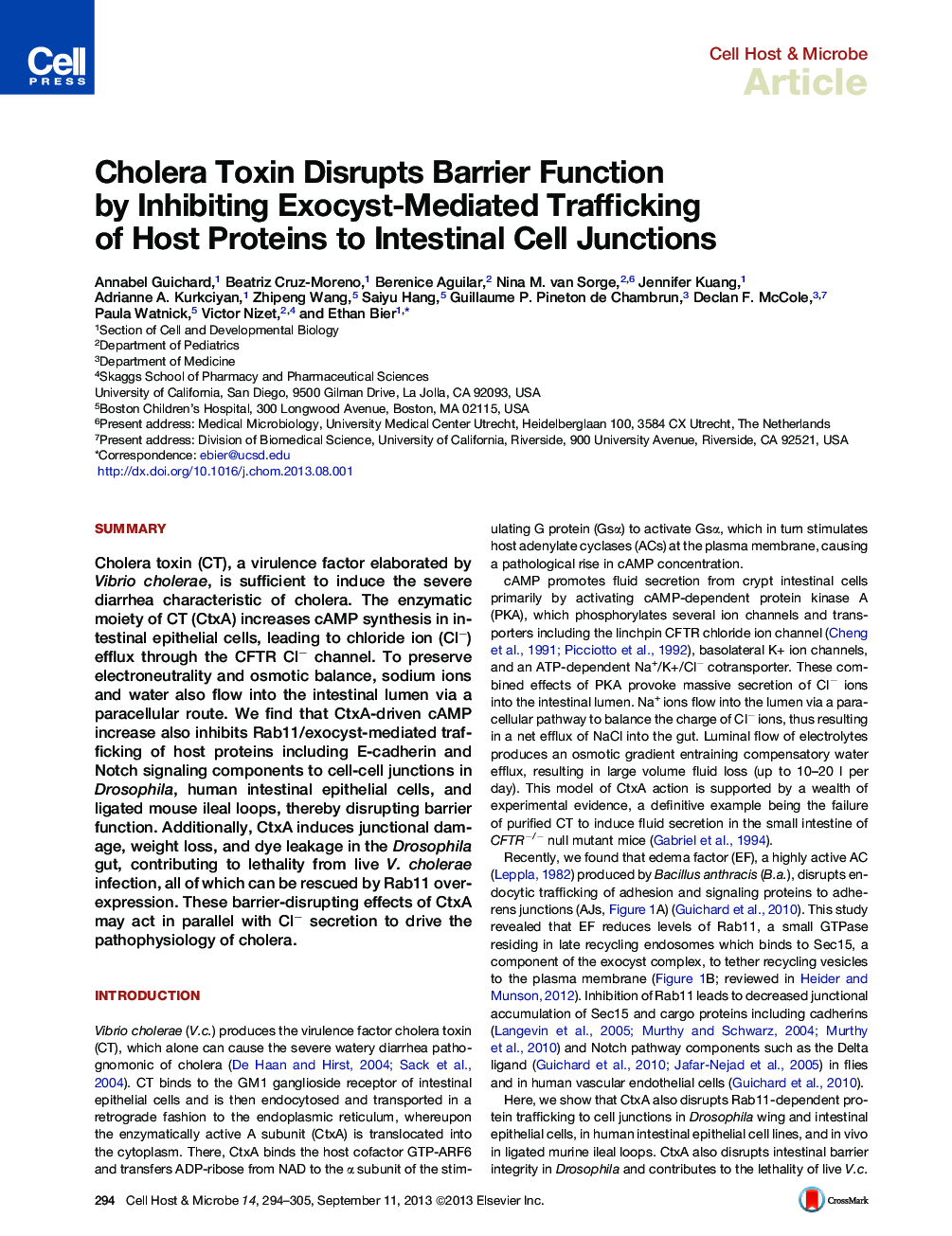| Article ID | Journal | Published Year | Pages | File Type |
|---|---|---|---|---|
| 4361105 | Cell Host & Microbe | 2013 | 12 Pages |
•Cholera toxin disrupts Rab11/exocyst-mediated protein trafficking to cell junctions•Cholera toxin inhibits Notch signaling in Drosophila and in human intestinal cells•Elevating Rab11 rescues Ctx-induced weight loss and junctional defects in the gut•Elevating Rab11 rescues Ctx-dependent lethality of V. cholerae infection in flies
SummaryCholera toxin (CT), a virulence factor elaborated by Vibrio cholerae, is sufficient to induce the severe diarrhea characteristic of cholera. The enzymatic moiety of CT (CtxA) increases cAMP synthesis in intestinal epithelial cells, leading to chloride ion (Cl−) efflux through the CFTR Cl− channel. To preserve electroneutrality and osmotic balance, sodium ions and water also flow into the intestinal lumen via a paracellular route. We find that CtxA-driven cAMP increase also inhibits Rab11/exocyst-mediated trafficking of host proteins including E-cadherin and Notch signaling components to cell-cell junctions in Drosophila, human intestinal epithelial cells, and ligated mouse ileal loops, thereby disrupting barrier function. Additionally, CtxA induces junctional damage, weight loss, and dye leakage in the Drosophila gut, contributing to lethality from live V. cholerae infection, all of which can be rescued by Rab11 overexpression. These barrier-disrupting effects of CtxA may act in parallel with Cl− secretion to drive the pathophysiology of cholera.
Graphical AbstractFigure optionsDownload full-size imageDownload high-quality image (217 K)Download as PowerPoint slide
